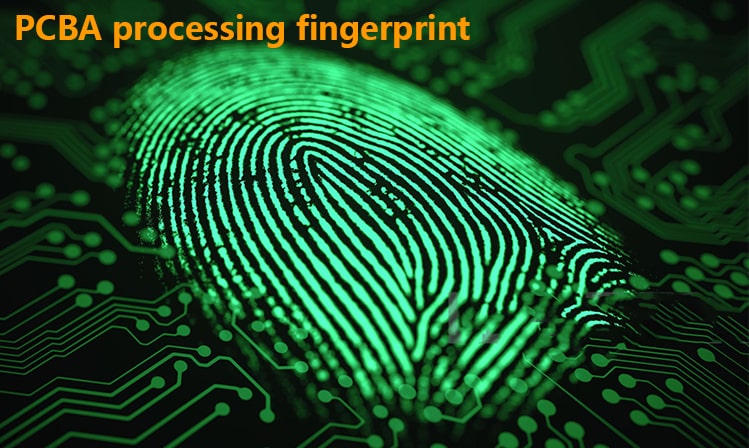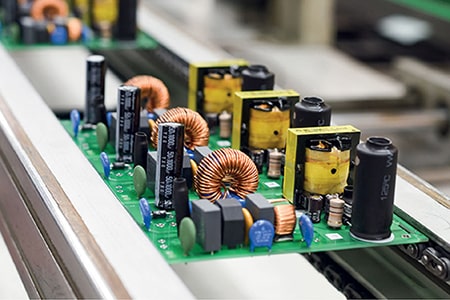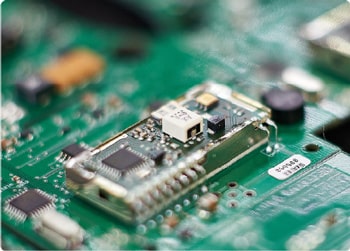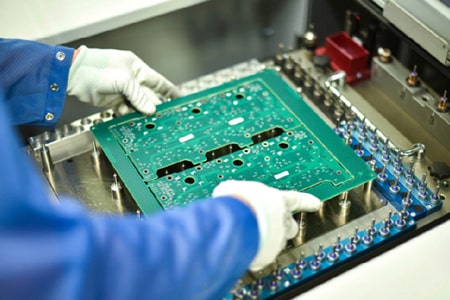SMT Processing: The Problem of Fingerprints Cannot Be Ignored
While most operations in SMT processing are performed by machines and equipment, manual intervention is unavoidable at certain moments, such as loading and unloading PCBs, positioning adjustments, and preliminary inspections. This means that technicians frequently touch the circuit boards during operation. Each time this touch occurs, fingerprints may remain.
The Negative Impact of Fingerprints on SMT Processing
Causing Oxidation
1. Oxidation: Sweat and oils from human fingers contain salt and other chemicals. When these substances come into contact with the copper surface of the circuit board, they can quickly react chemically with it, causing oxidation. Oxidation not only affects the appearance of the circuit board but can also impair its electrical conductivity.
2. Long-term Impact: Over time, this oxidation reaction, particularly after electroplating, can manifest as visible fingerprints, leading to uneven plating and severely impacting the product's appearance.
Reduced Adhesion
1. Weakened Adhesive: During the SMT process, adhesive is crucial for ensuring a good connection between solder pads and component pins. However, the oil and sweat from fingerprints can reduce the adhesive's adhesion, thus affecting soldering quality.
2. Plating Issues: During wet film printing, silkscreen printing, or pre-laminar preparation, the oil from fingerprints can significantly reduce the adhesion between the dry/wet film and the circuit board. During the electroplating process, this poor adhesion can lead to plating bleed-through and plating separation, seriously impacting the stability and reliability of the circuit board.
Contamination of Component Surfaces
Contaminant Deposition: Fingerprints may contain contaminants such as dust and particles. These contaminants can deposit on component surfaces during the SMT process, negatively impacting component performance and reliability. This contamination can be particularly detrimental to the electrical performance of high-precision, high-frequency components. Significant impact.
Impact on Visual Inspection
Increased Inspection Difficulty: Fingerprints on component surfaces can impair visual inspection, making it difficult for production personnel to accurately inspect solder joint quality. This can lead to missed inspections and the release of defective products into the market, negatively impacting brand image and product quality.

Causes of Fingerprint Issues
Improper Operation
Operators fail to wear cleanroom gloves or finger cots and directly touch PCBs or components, leaving fingerprints.
Unclean Production Environment
Inadequate cleanliness in the workshop and failure to strictly adhere to cleanroom operating procedures result in contaminants adhering to PCB surfaces.
Lack of Protective Measures
The SMT production line is not equipped with necessary protective equipment, such as cleanroom gloves, finger cots, and anti-static devices.
Inadequate Cleaning
PCBs or components are not effectively cleaned before use, resulting in surface contaminants.
Solutions to Address Fingerprint Issues
1. Personnel Management
Wearing Protective Equipment: Operators are required to wear dust-free gloves or finger cots during processing to avoid direct contact with PCBs and components.
Hand Hygiene: Operators should wash their hands to remove sweat and oil before entering the workshop.
Operation Training: Operators are regularly trained in standardized procedures to enhance their protective awareness.
2. Optimizing the Production EnvironmentCleanroom: Ensure that the production workshop meets dust-free standards and regularly clean the environment.
Humidity Control: Maintain an appropriate humidity level in the workshop to avoid excessive humidity, which can cause corrosion from moisture in fingerprints.
3. Improving ProcessesCleaning: Clean the PCB before soldering to remove surface grease and other contaminants.
Automated Equipment: Minimize manual operations and increase the use of automated equipment to reduce the possibility of human contact.
4. Quality InspectionVisual Inspection: Add a visual inspection step after key processes to promptly detect and remove fingerprints.
Microscopic Inspection: Use a microscope or other inspection equipment to carefully examine the PCB surface.
Although seemingly minor, fingerprints can have a significant impact on the quality of SMT processing. By standardizing operations, optimizing the environment, improving process flows, and strengthening quality inspections, fingerprint issues can be effectively reduced, thereby improving product quality and reliability. PCBAMake factory always adheres to quality control to ensure that all processes are carried out in accordance with standard operating instructions to ensure that your products are perfectly reproduced.







